How Stacia Guzzo Pivoted and Started A $58K/Month Deodorant Product
Note: This business is no longer running. It was started in 2014 and ended in 2024. Reason for closure: Shut down.
Hello! Who are you and what business did you start?
My name is Stacia Guzzo, and I’m the founder of SmartyPits Deodorant. SmartyPits is free of aluminum, phthalates, parabens, and propylene glycol, and we give a portion of sales back to breast cancer research and survivor support.
Our customers include anyone that is looking for a healthier alternative to traditional antiperspirants (which contain aluminum).
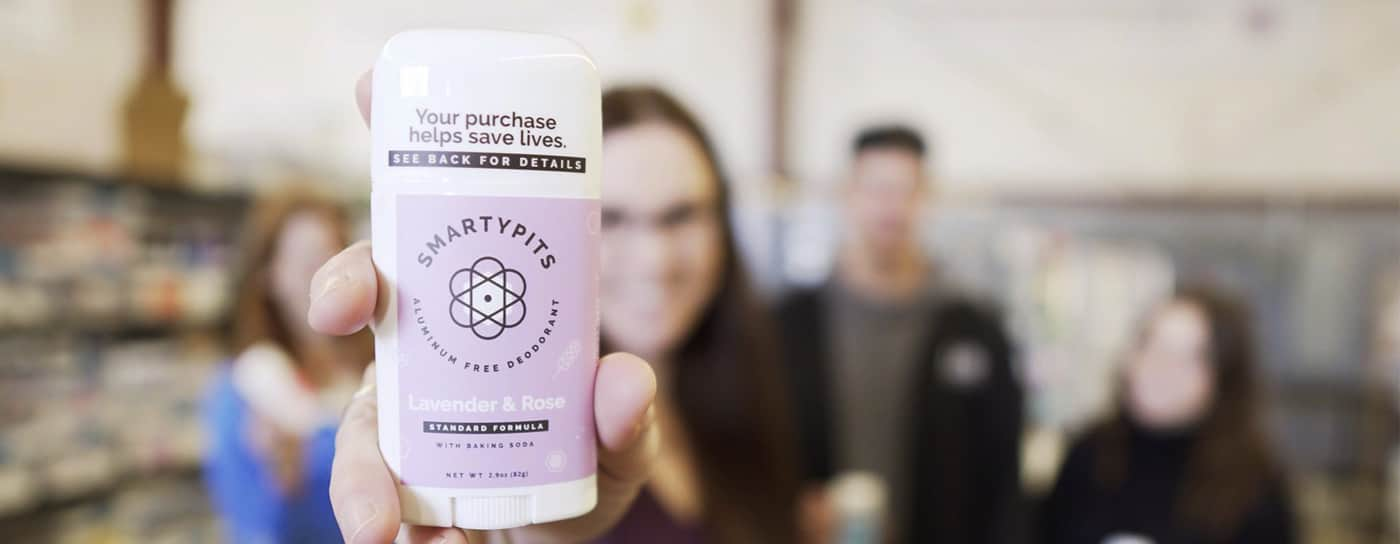
We didn’t, however, start out as SmartyPits, nor did we start out with the idea to mainly make deodorant. Our path is a bit more winding. It’s a story of failure, success, flexibility, and paying close attention--and one that I’m excited to share with you.
In the last 21 months, SmartyPits has grown from making under $100,000 in 2016 to making over $500,000 by the end of Q3 in 2018.
What's your backstory and how did you come up with the idea?
SmartyPits itself was inspired by my mom’s experience as a breast cancer survivor. When she discovered the lump, it was directly underneath her armpit.
It was an incredibly aggressive cancer. We had no family history of breast cancer--no genetic predisposition, no family history at all. In fact, her doctors at the time told her it was likely it was environmentally influenced.
I think one of my biggest lessons learned is that fast is not always better. When I first started, I thought scaling meant simply doing what I was already doing, but doing it more.
This led me to do some research, and it was the first time I learned about the links that some studies had found between aluminum and breast cancer (and Alzheimer’s Disease).
Knowing how aggressive this cancer was, and now having an immediate family history at the time, I tried to go aluminum-free at the time (I was an avid “clinical strength” antiperspirant user). However, I just couldn’t find anything that worked well for me--and that experience would eventually be the reason I created one myself.

However, in order to know how I was able to do that, I have to jump around in time a bit. My mother was diagnosed several years before I learned to make skincare, and so when I couldn’t find an aluminum-free deodorant that worked for me, I went back to my antiperspirant for while, unsure of how to solve this problem for myself. I was a classroom teacher at the time--and while I had always been a creative person, I had never thought of making my own skin care.
Then my husband and I moved to a much more rural location, and we became hobbyist beekeepers (something we’d wanted to do for some time). With our first honey harvest, we had excess wax, and I just knew I wanted to do something interesting with it.
I found a lip balm recipe on the internet, and used the wax to make it...and it was awful. It was hard and crumbly, and I was so disappointed! I knew with a little bit of research I could figure out how to make it better. About 16 formulas later, I made the perfect lip balm, and was hooked on learning how to make skin care.
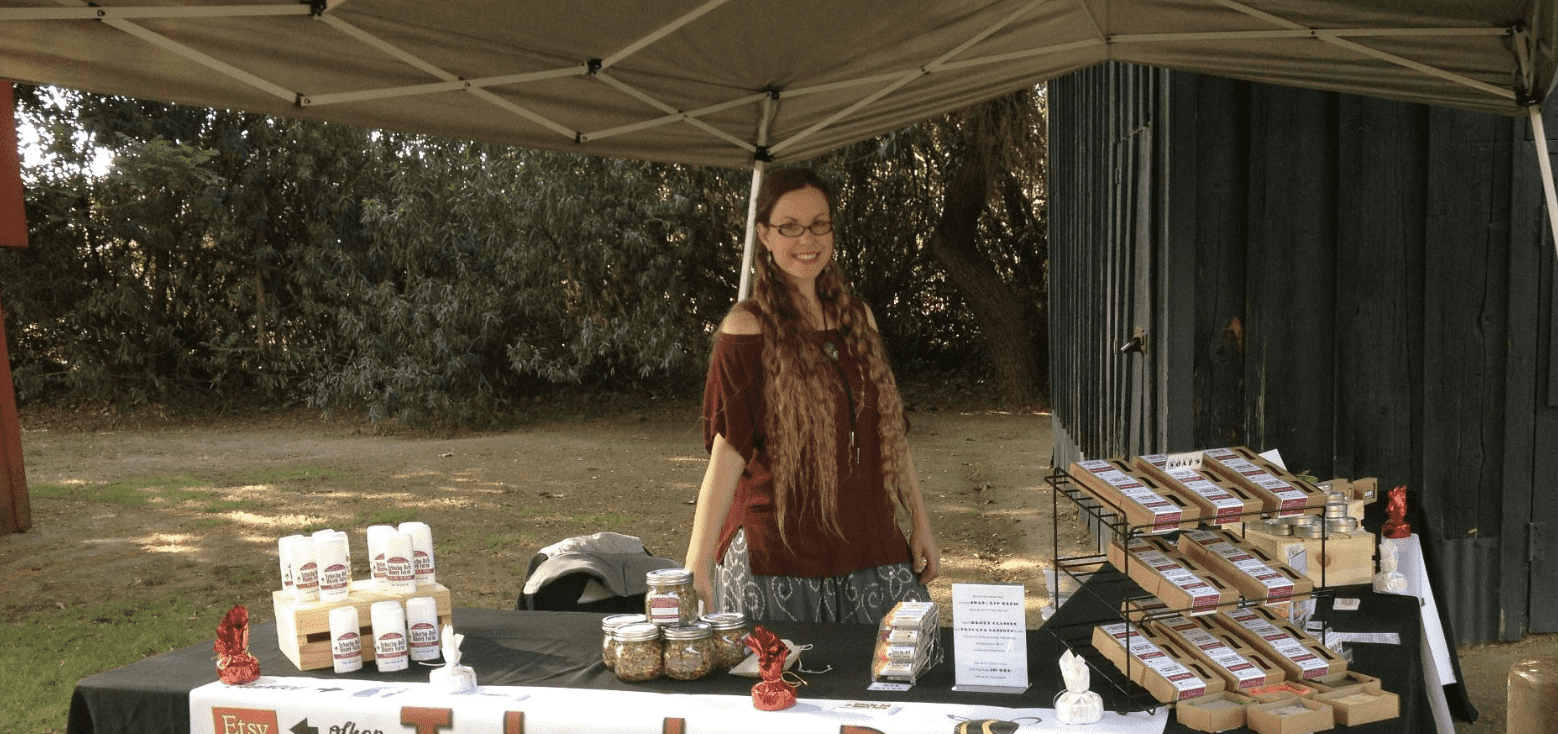
That lip balm would lead to learning how to make soap, lotions, salves, bath salts and teas, and more--I became obsessed with learning how to formulate, and enjoyed selling at small farmer’s markets. In 2014 when I officially started what I would call Handcrafted Honey Bee, I grossed around $40,000 by selling in 1 or 2 local shops, online, and in local craft shows.
Admittedly, though, there was no profit in that number. I hadn’t yet learned how to price my products appropriately, buy in quantities that would make the product profitable, or scale production beyond a few at a time. But I was building the foundation.
Describe the process of designing, prototyping, and manufacturing the product.
A couple of years into making my own skin care, I knew I had finally learned enough to begin making my own deodorant. It was a bit more complicated (what’s called a 3-phase process), but I had enough of a knowledge base by that point to give it a shot.
Just like with the lip balm, the first iterations of the product weren’t the best...and yet, people wanted to buy it anyway! It was clear there was a need.
In fact, deodorant began to quickly be one of our most popular product. We’d take a formula to a farmer’s market or craft show, sell it, get feedback on what we could improve, and take it back to the studio to tweak the formula.
Back then, we made everything in very small batches--we made six at time, on a double boiler, in mason jars. We had a small studio that was adjacent to our home, so we had a space dedicated to manufacturing.
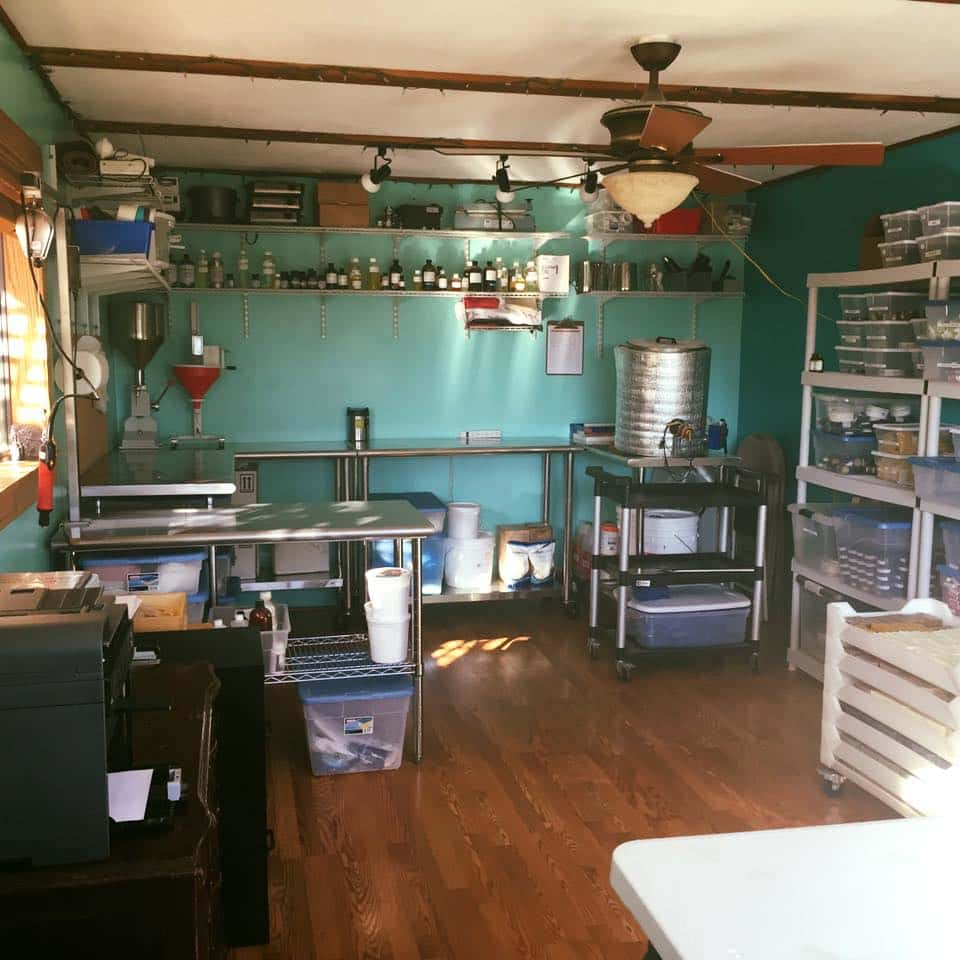
Eventually, we got a small 13-gallon wax melter, and we were able to learn to scale production. We got to the point where we could make up to 500 in a day, which was huge at the time!
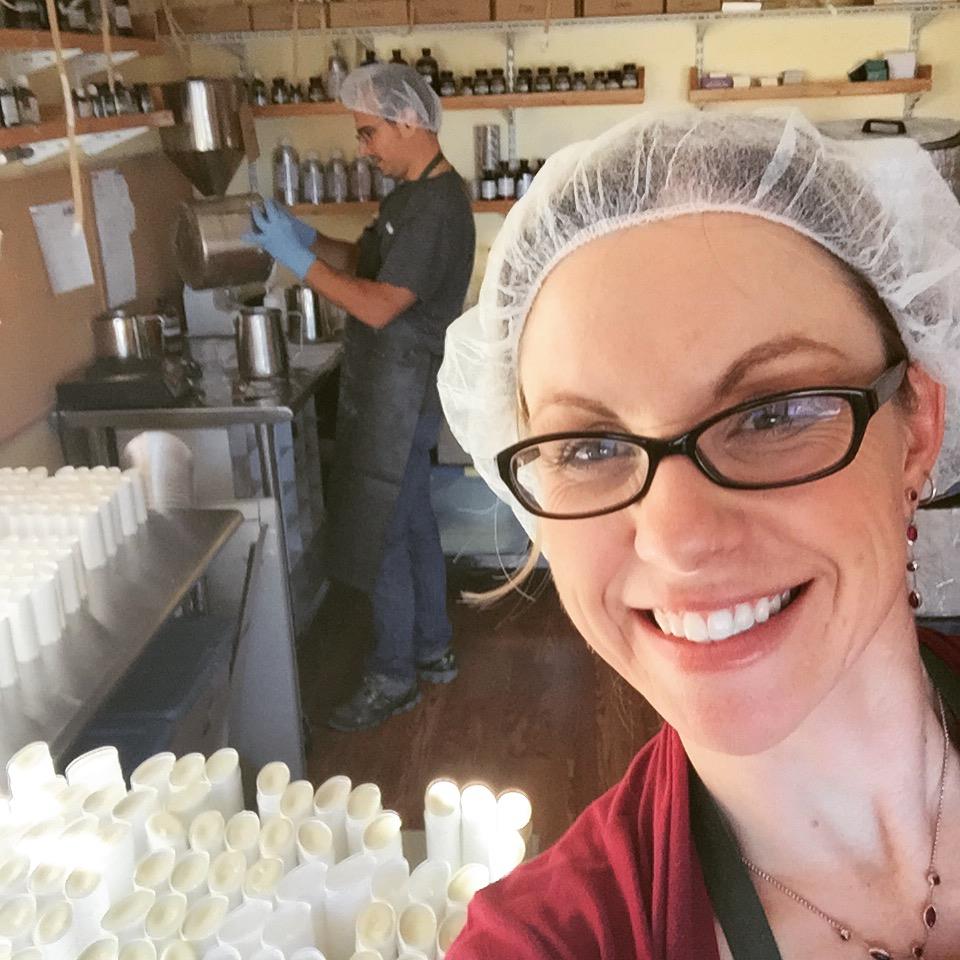
When we eventually moved into our current warehouse, we also got a couple of 45-gallon wax melters; each of those can hold enough base for 1500 deodorants at a time. That’s how we manufacture today.
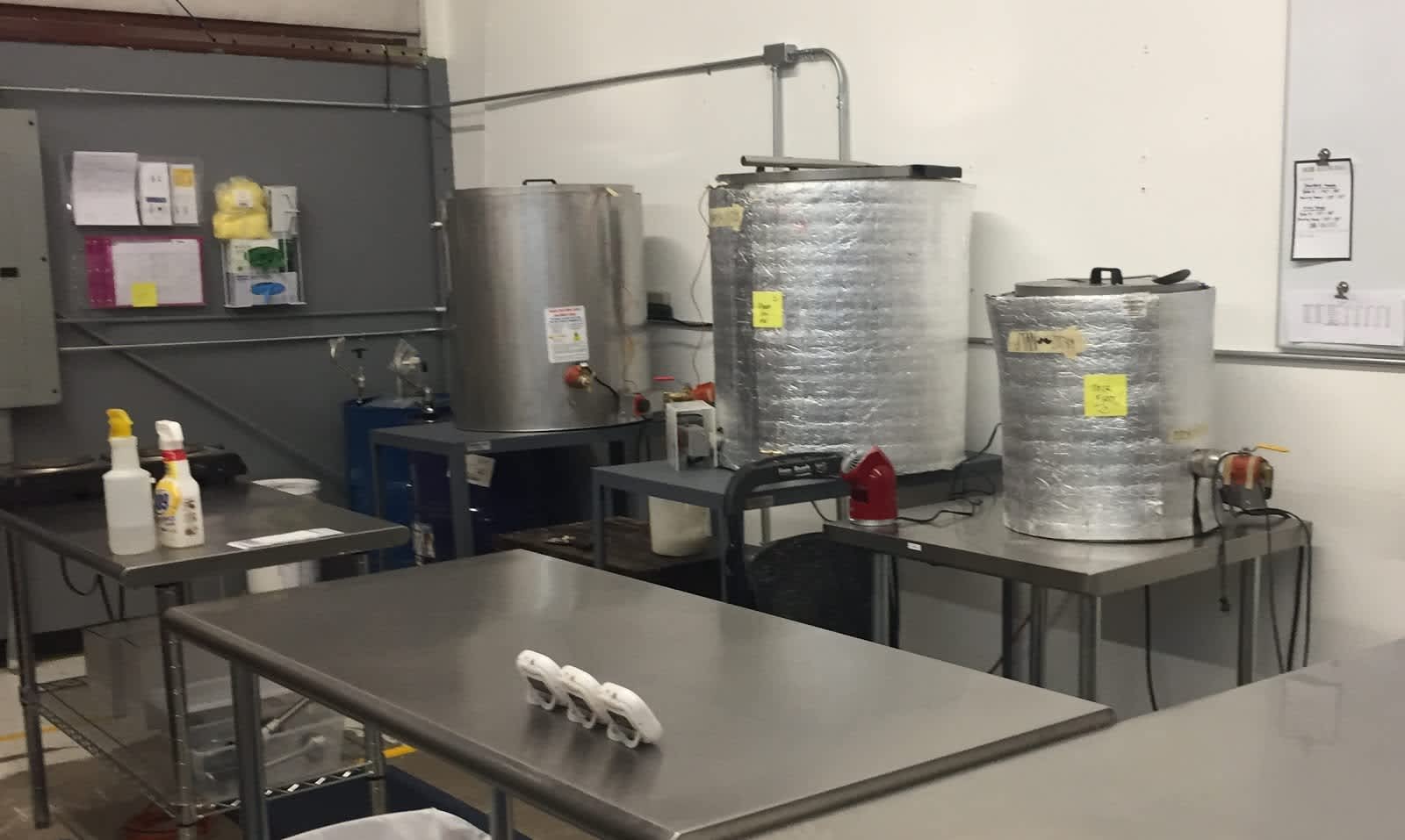
Our wax melters--we still have our original small one too.
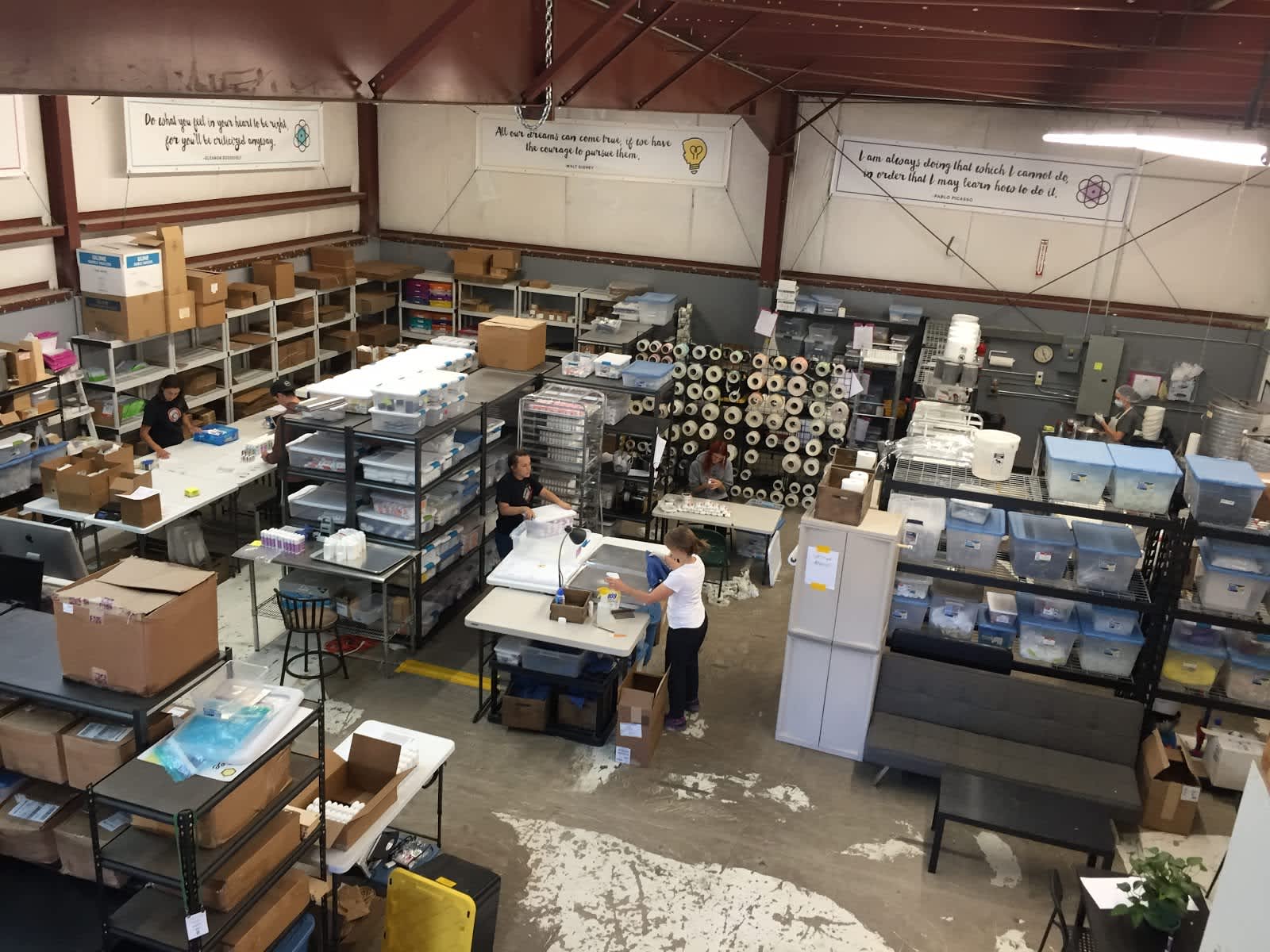
A snapshot of part of our current warehouse
Describe the process of launching the business.
I didn’t really have an official launch that I can remember (or at least that I knew how to market). It was much more of an organic process, growing my business in person at local markets. Getting online was more of an outflow of those markets--I began to wonder if I people outside of my immediate area would be interested.
The very first online presence I had was on Etsy. I had no idea about how to run an online shop, how to market, any of it--I just put the product up on the website and mentioned to my friends on Facebook that I was selling my lip balms and soaps for Christmas. I made $1000 off of that Etsy shop the first December I put it online, and it felt like a million dollars! I was floored.
I then moved on to a simple Shopify store--I was amazed at the templates! It felt like Handcrafted Honey Bee was an official online business. In mid-2014, I won $5000 from a small business contest put on by Intuit. I used that money to have a designer create a custom website. It was beautiful--but there was a problem.
The design, which gorgeous, just didn’t speak to my customer base. We didn’t see a lot of online traffic--and so I began to attend even more craft shows to drive business, as well as enter a lot of online contests to gain exposure.
While this increased our traffic a bit, it was exhausting. I wasn’t able to keep up the pace of constant shows and contests (did I mention I had two infants at the time?). I was quickly running out of both money and energy...and my product design still didn’t speak to my customer base.
In early 2016, I put all my remaining money into a complete redesign of absolutely everything--our logo, our website, our packaging, everything. We used the cream of the crop design team at Aeolidia and it was the best decision I ever made.
The redesign cost me over $30,000, and at the time we had no money left after launch. It was a huge risk...and it totally paid off. Within 6 months of re-launch, our website traffic had increased by 1200%, and our revenue soared toward the coveted 6-figure mark.
And yet that’s not the end of the launch story. Our traffic was soaring, and deodorant was quickly becoming our #1 product. But we had a big problem: people couldn’t remember the name. At the time, it was simply called “Handcrafted HoneyBee Deodorant.” And it just wasn’t a name people could remember.
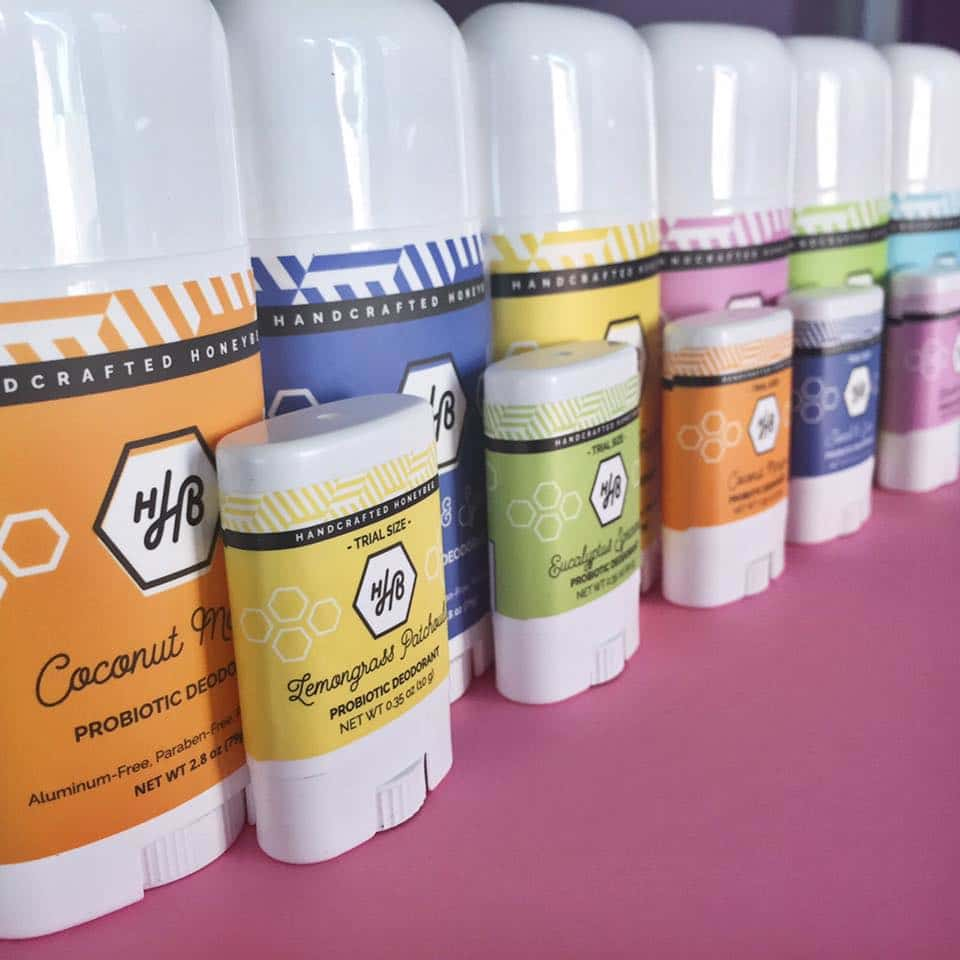
In late 2016, a name struck me: SmartyPits. I was in my car, driving home, and the name popped into my head. I literally laughed out loud thinking about it.
As soon as I got home, I contacted my trademark lawyer--we filed for an intent-to-use trademark later that day.
We rebranded the deodorant line as SmartyPits in April of 2017, and I can say with certainty that it was that single move that changed the entire course of our business. All the foundation we laid ahead of time had primed for this moment.
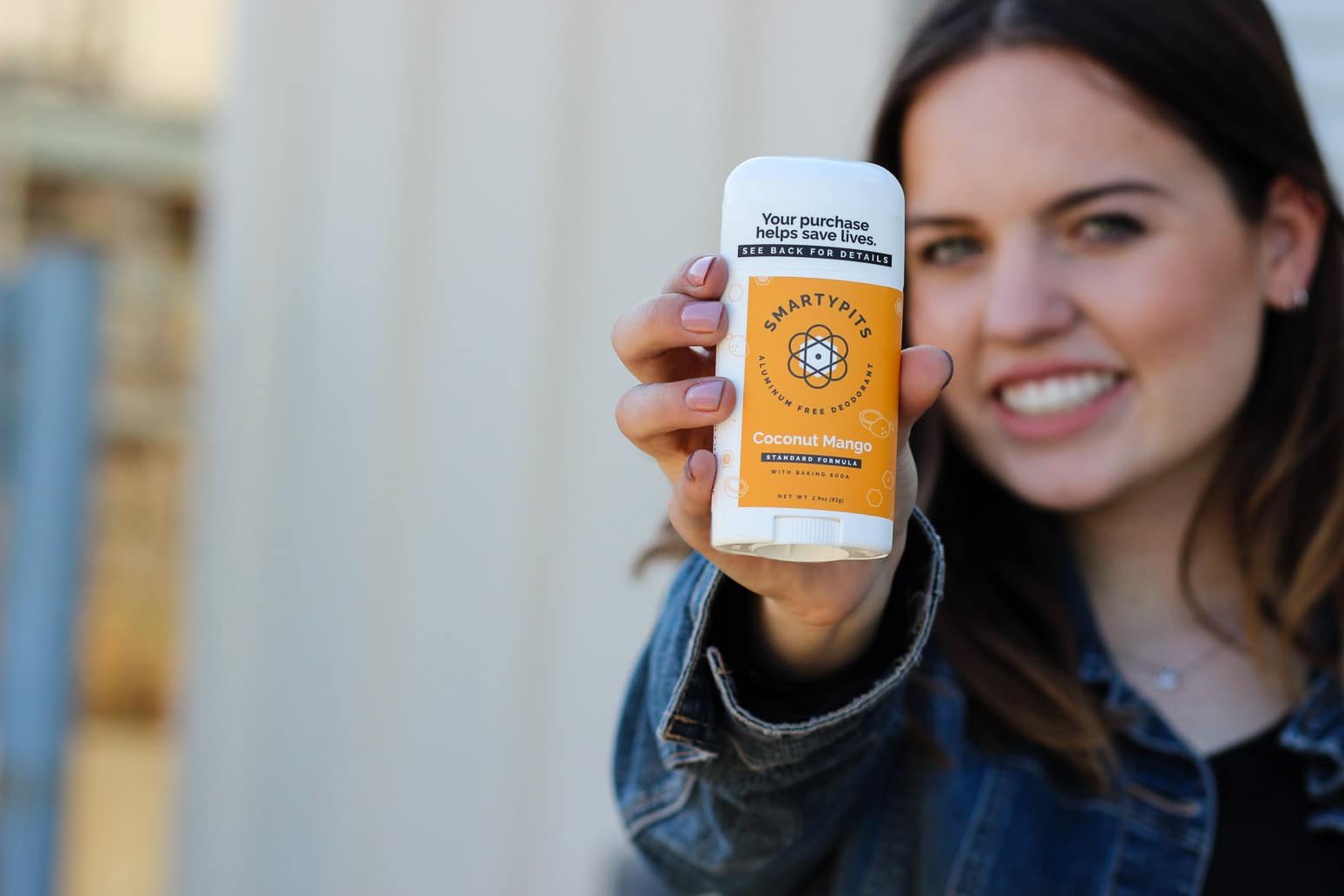
Not only did our online traffic go through the roof, but our wholesale revenue did as well. We went from being in 30 stores to being in 150 stores by the end of the year (and now in over 850 doors 18 months later).
Our return customer rate more than doubled. And our revenue hit over $200K by the end of 2017, with SmartyPits being 90% of our revenue at that time.
Since launch, what has worked to attract and retain customers?
We’ve had some really great marketing efforts and some real flops.
The biggest thing that has worked for us--and that has always been a pillar of our company--is cultivating and nourishing relationships. This goes for individual customers, sales reps, wholesale accounts, influencers, potential partners--every relationship matters.
One thing that simply didn’t work for us? Facebook ads. We hired two different strategists with great track records to help us, but it ended up just being a money pit. I realized later that we’re up against some giants in the natural deodorant space; in addition, blind ads didn’t work as well with our cornerstone of building relationships.
In fact, anything we do that helps to connect with our customers personally does well--from Facebook live, to email newsletters, to YouTube videos. My biggest hindrance with those right now is time and bandwidth and balancing those efforts with the time I need to put into facilitating the practical aspects of our growth.
Tradeshows have also worked really well for us--especially shows like Natural Products Expo West and Indie Beauty Expo. Those shows have a press/blogger aspect in addition to the wholesale buyers, and we’ve gotten a lot of traction from giving out samples at those shows.

Finally, we do have Amazon as a selling channel, but we don’t sell personally on Amazon. Instead, we have a wholesale account that sells as a third-party seller. We have an exclusivity agreement with them (so no other sellers can sell on the platform), and it’s worked out really well for us.
Because they sell above our MSRP, it isn’t the lowest-cost option on the internet, but it reaches the Amazon buyer. The exclusivity agreement (which they monitor closely) ensures that nobody can sell on Amazon without us knowing, which also has been a big benefit to the relationship.
How are you doing today and what does the future look like?
Today, we are profitable--but it has taken us 4 years in business to get here. It’s also the first year I’ve paid myself a real salary, which has been really exciting.
Part of the challenge of this stage (particularly 2018) has been the rate of growth. Because we’ve grown so quickly this year, we’ve had to invest a lot of money back into the business--buying an additional melter, investing in more shelving units, a forklift, and hiring more people. (Because we still manufacture and distribute completely in-house, labor is a big part of our budget; in exchange, we’re able to have a lot of flexibility and quick turnaround when it comes to filling orders that come in quickly.)
Currently, the wholesale side of our business makes up about 80% of our revenue, with online sales the remaining 20%. We’re now in about 850 doors nationwide. Admittedly, from about June 2017 until now, our main focus has been on growing the wholesale side, and it’s been great for this stage of our growth; however, I’m looking forward to increasing our online revenue in 2019.
Deodorant is now about 97% of our sales. We currently get about 4500 visitors to the site every month with a 4.5% average conversion rate. Our average order spend is about $33--not bad for selling deodorant!
We’re excited that in December 2018, we’re going to be launching a new SmartyPits website--and knowing the difference the new website made back in 2016, we’re excited to see what this does for us in 2019.
Through starting the business, have you learned anything particularly helpful or advantageous?
As I mentioned before, relationships have been the key to growing our business. I’ve nourished relationships through some incredible networks (Indie Business Network, Savor the Success, and Goldman Sachs 10,000 Small Businesses to name a few). The people I’ve met have been seed planters, soundboards, door openers, and givers of tough love.
The other thing I’d mention that has been both an advantage and a disadvantage is that I’ve never been afraid to take risks. Sometimes, those risks have cost us a lot of money. Sometimes, those risks have been the key to taking us to the next level. Risk taking is very much a personal threshold--but in this case, it’s been a big part of our story.
What platform/tools do you use for your business?
I have two Shopify sites--one for our retail site and one for our wholesale site. We use a ton of apps, but some of the best include:
- Shipstation for streamlined shipping
- Locksmith to keep our wholesale site visible for buyers only
- Recharge for managing subscriptions
A great project/communications platform for my team has been Basecamp. Through Basecamp, I’m able to create different teams--one for shipping, one for manufacturing, one for marketing, etc.
I create to-do’s, chat with my project leads, and can communicate general timelines to my team in a streamlined way. I love using Basecamp!
For inventory, I just started using a system called Unleashed. We’re still getting everything in, but one of the best things about Unleashed is that it’s able to sync with Shopify and Quickbooks. It also is able to track lot numbers and batches--from raw materials through finished products--so we’re able to stay compliant with the FDA regulations for Good Manufacturing Practices.
What have been the most influential books, podcasts, or other resources?
I love the How I Built This podcast--I always listen to it when I have to fly somewhere. Hearing how these giants first began, and knowing that the entrepreneurial roller coaster isn’t a unique experience, continues to be inspiring to me.
The first season of StartUp was pretty good, too. It gave great insight to getting a business off the ground and some of the crazy things that happen along the way.
As far as other resources--I highly recommend finding a mastermind group (preferably with people outside your industry). It has been a game changer for us.
Advice for other entrepreneurs who want to get started or are just starting out?
I think one of my biggest lessons learned is that fast is not always better. When I first started, I thought scaling meant simply doing what I was already doing, but doing it more. So when we were making 500 deodorants a week, I thought to scale would be as simple as figuring out how to make 2500, then 5000, then 10,000 deodorants a week.
But scaling is so much more than that. It’s new marketing strategy, it’s learning to manage a team, it’s figuring out how to connect with suppliers, it’s new methods of distribution, it’s storage, it’s a longer cash cycle. Learning these things one step at a time is way easier than being forced to figure it out all at once (and possibly making some critical mistakes because of it).
The other thing I’d recommend is that no matter your size, take time to do an annual retreat. We do both an owners retreat (where we look back at the year prior and look forward to what is to come) and a team retreat. These retreats have proven to be some of the most influential experiences in our growth.
Where can we go to learn more?
You can find us at:
- www.smartypits.com
- Facebook: https://www.facebook.com/smartypitsdeo
- IG: @smartypits
- Email: hello@smartypits.com

Download the report and join our email newsletter packed with business ideas and money-making opportunities, backed by real-life case studies.

Download the report and join our email newsletter packed with business ideas and money-making opportunities, backed by real-life case studies.

Download the report and join our email newsletter packed with business ideas and money-making opportunities, backed by real-life case studies.

Download the report and join our email newsletter packed with business ideas and money-making opportunities, backed by real-life case studies.

Download the report and join our email newsletter packed with business ideas and money-making opportunities, backed by real-life case studies.

Download the report and join our email newsletter packed with business ideas and money-making opportunities, backed by real-life case studies.

Download the report and join our email newsletter packed with business ideas and money-making opportunities, backed by real-life case studies.

Download the report and join our email newsletter packed with business ideas and money-making opportunities, backed by real-life case studies.








